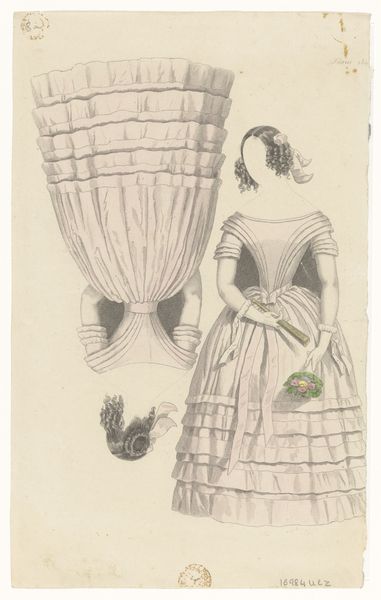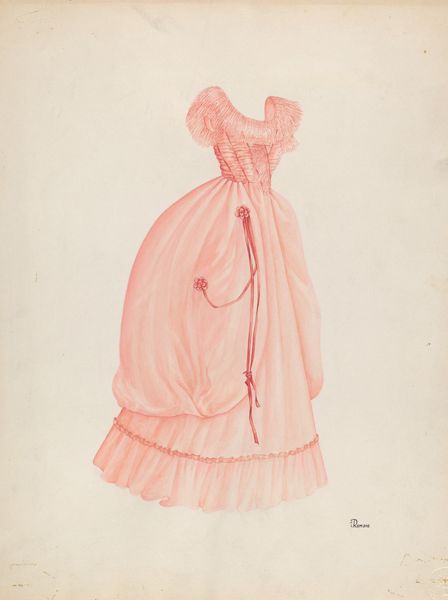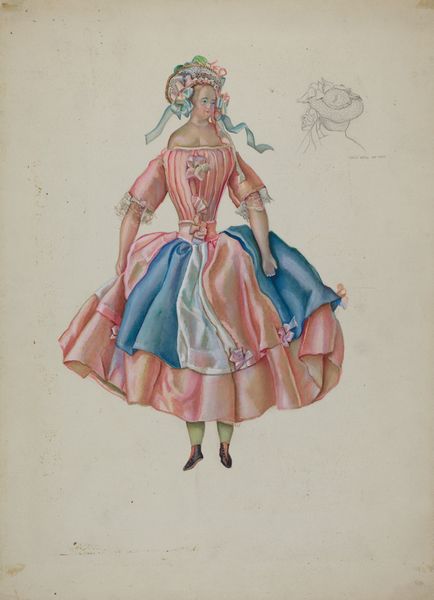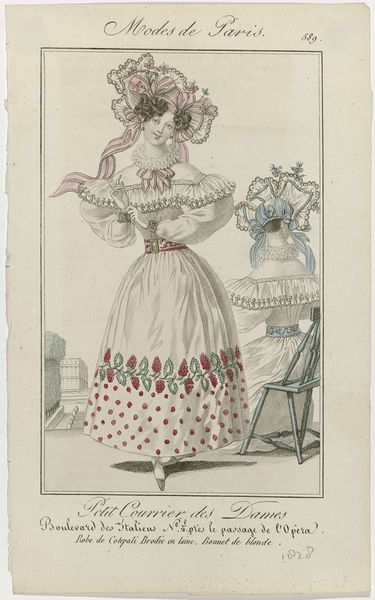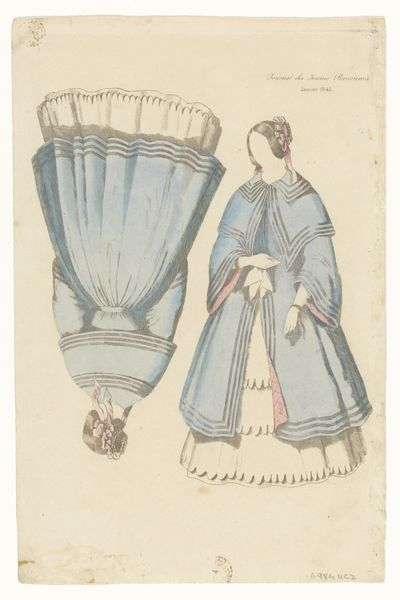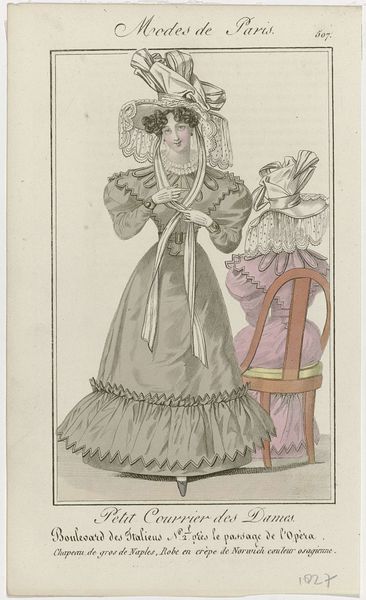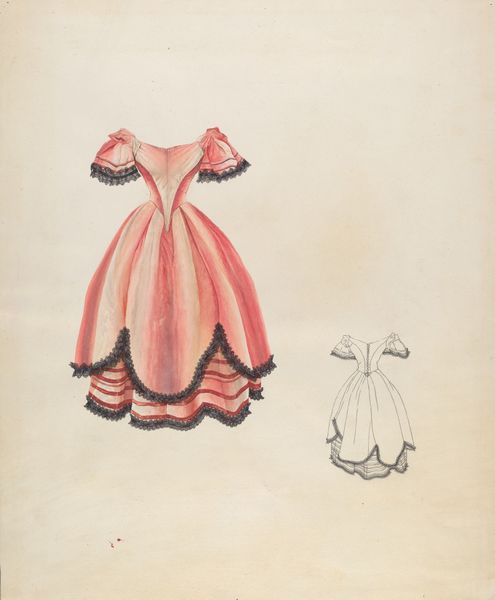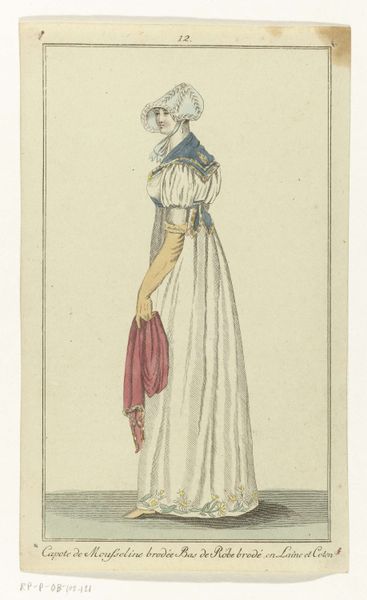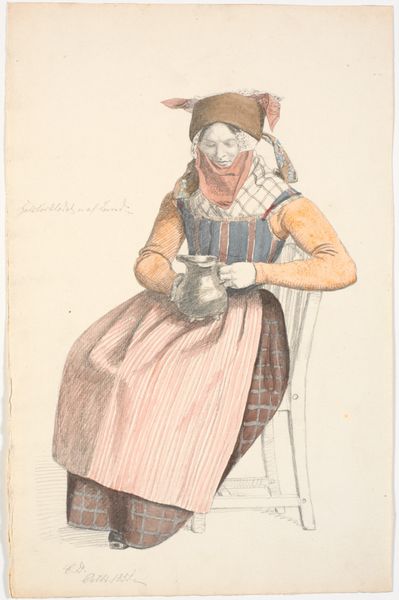
drawing, watercolor
#
portrait
#
drawing
#
caricature
#
figuration
#
watercolor
#
watercolour illustration
#
academic-art
Dimensions: height 242 mm, width 150 mm
Copyright: Rijks Museum: Open Domain
This cutout doll, made with watercolor and pencil, presents a fashion from October 1842. We see a figure rendered in delicate washes of blue, composed of separate pieces: a torso, a voluminous skirt, and a bonnet. The artist has used a limited palette to create subtle tonal variations across the fabric, giving a sense of depth and texture. What is intriguing is the fragmentation, which isn't merely about representing fashion. The doll exists as a series of discrete components, each delineated by a fine line. This anticipates later modernist strategies of deconstruction, challenging our assumptions about wholeness and unity. Instead, the artwork foregrounds the constructed nature of identity. Consider, too, the absence of a face, which opens up possibilities. Without specific features, the viewer is invited to project their own desires. This doll transcends its historical context, becoming a mirror reflecting our own preoccupation with appearance.
Comments
No comments
Be the first to comment and join the conversation on the ultimate creative platform.
